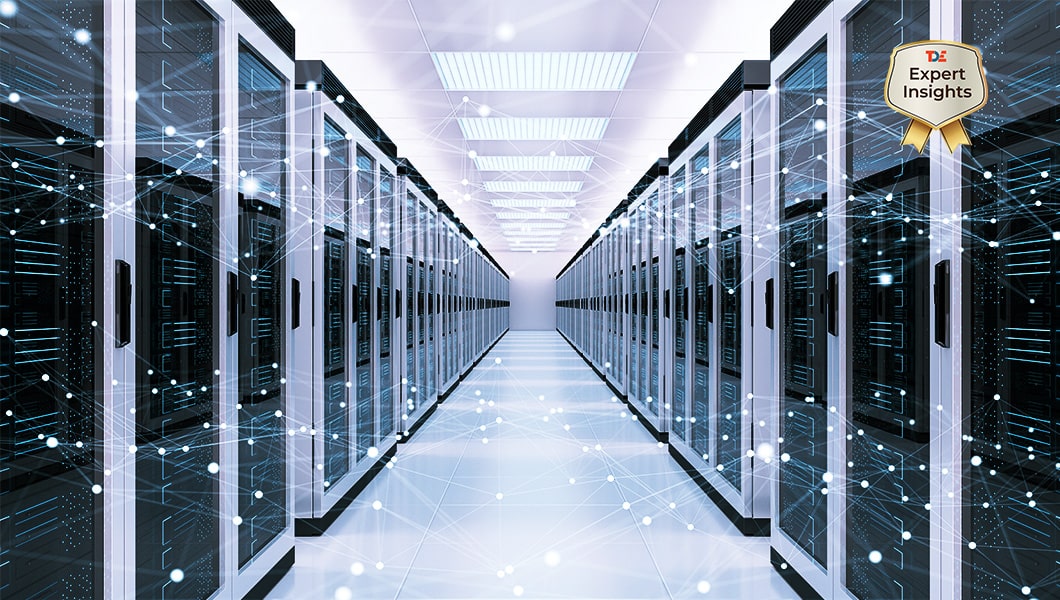How Digital Enterprises Are Moving Towards Green Data Centers

Taking a green approach to running data centers is the latest trend among large enterprises. In this article, Maciej Duraj, multimedia journalist with expertise in consumer and B2B tech, discusses the importance of implementing green data centers, the ROI for businesses by turning them energy-efficient and using eco-friendly colocation server providers as an option for SMBs to save costs
It’s a known fact that data centers use extensive amounts of energy so that they can run smoothly. In fact, some sources suggest that up to 3% of all electricity produced in the US is used up to power data centers. The facilities that host high-performance computer servers and other equipment like cooling systems are generally large storage hubs that we refer to as a data center. These facilities are running constantly 24/7 without any breaks, so that enterprises and individual users can access them on demand. With more and more businesses moving their operations to the cloud, this demand for data centers will only scale in the future.
Data centers use superior hardware to be running constantly, so users can have uninterrupted accessibility to remote servers, data and virtualization machines on demand and in a scalable fashion. The topnotch systems allow for servers to be put on standby mode while waiting for new users to access them and scale their computing on demand. Data centers cannot break down, because if a data center has an outage, for example, it can cause businesses huge losses, as customers cannot access their data and organizational operations come to an abrupt halt. Thus, these data centers need to be both efficiently run and scalable to large number of users or machines accessing them remotely and simultaneously.
Due to this, huge amounts of energy is required to power these data centers, and today, organizations are showing the trend to move towards a more energy-efficient or ‘green’ way of running data centers. Energy-efficient data centers rely on the latest technologies for cooling, deploying monitoring software and creating smart architecture design to keep them running. Green, however, does not mean that they do not consume large amounts of energy.
How green data centers are efficient in saving energy
One example of how data centers are starting to become green or more energy-efficient is the use of standby mode function on servers. Servers that are not being utilized or accessed remotely can be put into standby mode, thus reducing their power consumption while not in use through get requests.
Another efficient technique that is used in a green data center is for companies to rely on heat redistribution within the building’s duct work in cold months instead of a traditional air-conditioning system. This sort of a system relies on an underground cooling system, where there is a constant temperature of say 54 degrees, while air circulates back and forth within this underground facility and the main data center above ground.
Green data centers are good not only for the environment, but also save considerable expenditure for companies over the long term. According to a report from the office of Energy Efficiency and Renewable Energy of the US Department of Energy, for every watt that computer equipment use, data centers require more than two watts of power. However, with green data centers, just one-tenth of a watt is needed. Compared to a traditional data center of a similar size, this data center uses 81% less energy.
Another way some companies are cutting costs and using green data servers rather than building their own green data centers or relying on traditional and outdated data center solutions is by using colocation providers for certain tasks. A colocation is a physical facility or data center location that businesses can rent out from a provider and bring in their own servers and hardware at the facility. The colocation company provides the power that runs the facility along with bandwidth and cooling.
According to Market Research Future’s ‘Global Data Center Colocation Market Research Report – Forecast 2023’, there is a trend for companies to use green colocation service providers for their data center needs, which in turn are partnering with cloud service providers for greater energy efficiency within these facilities.
Their analysis shows that the green data centers are the trend to ensure energy consumption is minimized and energy efficiency of the system is optimized. The advantage of colocations, which is required for business operations, is that they can put the computing servers, storage, network infrastructure and other equipment on lease.
Examples of renowned green data centers
Some of the more well-known green data centers include Facebook’s in Lulea, Sweden; Apple’s in Maiden, N.C.; and Google’s in Hamina, Finland. Leading tech brands have great lessons to share on how they are making their data centers eco-friendly. Google, for instance, recycles all the electronic equipment that it replaces, thus ensuring very efficient e-waste management. Apple, on the other hand, is known for powering its facilities with renewable energy sources like solar or wind power.
It is interesting how various companies are using different methods and techniques to make their data centers as energy efficient as possible, and this trend is expected to continue in the future. Sometimes, the goodwill and respect that a brand gets makes the effort worth it for a company like Apple, and whether something like wind power is even cost-efficient is secondary. In other cases, the cost savings by relying on more efficient cooling systems is the reason for going green.
It is also interesting how companies are using server space around the world for ensuring green data centers. Using colocations after conducting proper research and finding an ideal place to host a business’ green data center can only lead to reduced expenditures.
Facebook, for instance, is using the environment around its data center in Lulea, Sweden for cooling purposes. It is using Scandinavian climate and chilled air from the region alongside traditional water-cooling methods for energy efficiency. In addition to this, their data center uses very efficient and locally run hydroelectricity that reduces the need for back-up generators by up to 70%.
Developing Green Data Centers
Today, it’s not only the large enterprises that are tapping into these energy-efficient data center designs. Even small and medium companies from various industry sectors are seeking more energy-efficient data centers. And, efforts to find methods for more energy-efficient data centers need to continue.
However, green data centers mean a gamut of approaches – be it data centers that are self-powered using renewable energy or those that rely on low power consumption for every component. No one single criteria or definition makes a data center green.
The general idea is for these data centers to use energy in an efficient manner and move toward renewable energies, lower their power consumption compared to traditional data centers and ensure a smart use of infrastructure. Having an attitude of being environmental-friendly with a more positive ecological impact on people and overall energy usage is what characterizes a green data center.


 By
By 








